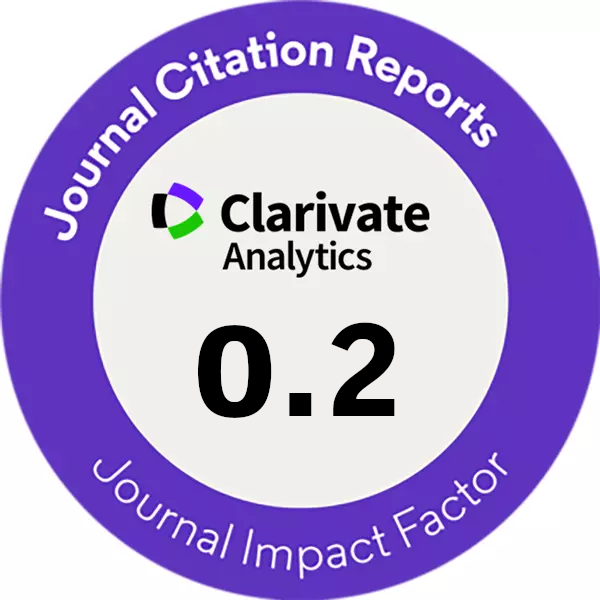UNCERTAINTY OF QUALITATIVE RESULTS OF CHEMICAL ANALYSES IN FIRE SAFETY
DOI:
https://doi.org/10.14311/CEJ.2018.01.0001Keywords:
Qualitative chemical analyses, GC/MS, Fire debris, Samples, Accelerants, Uncertainty estimation Bayes´ theorem, Fire technical expertise, Fire safety of buildings.Abstract
The article deals with the current issue of evaluation of qualitative results uncertainty of chemical analyses in the example of chromatographic analyses of specimens of accelerants from a fire place with the SPME-GC/MS technique. The suitability of this technique demonstrates with the results of alidation measurements of analytical characteristics: sensitivity, detection limits, linearity, selectivity and repeatability. It characterizes briefly the current state of knowledge in the area and applies the Bayesian theory for the unconditional “a-priori” probability of an analyte presence in a sample, P (H) of 0.5 and 0.95 for calculation estimates the “a-posteriori” conditional probability of the presence of the analyte in the sample relative to the experimental evidence, P (H / E) with the results of 0.97 and 0.98. This result can be interpreted as a high level of assurance of the hypothesis of presence of the analyte in the sample. In conclusion it is stated that the knowledge can also be applied in the field of construction not only in qualitative analyses of building materials / products, e. g, by FTIR, but also in the probability risk assessment.
Downloads
References
ISO/IEC 17025: 2017, General requirements for the competence of testing and calibration laboratories.
ILAC G17: 2002, Introducing the Concept of Uncertainty of Measurement in Testing in
Association with the Application of the Standard ISO/IEC 17025.
ISO 3534-2: 2006, Statistics -- Vocabulary and symbols -- Part 2: Applied statistics.
GUM (1995) - Guide to the Expression of Uncertainty in Measurement. Švýcarsko: BIPM, IEC,
IFCC, ISO, IUPAC, IUPAP a OIML, 1995. 101.
ISO 5725-6:1994, Accuracy (trueness and precision) of measurement methods and results --
Part 6: Use in practice of accuracy values.
ISO 21748:2010, Guidance for the use of repeatability, reproducibility and trueness estimates
in measurement uncertainty estimation.
ISO 10012:2003, Measurement management systems — Requirements for measurement
processes and measuring equipment.
Quantifying Uncertainty in Analytical Measurement. Eurachem/CITAC Guide CG4. 2000,120s.
Stephen L. R. Ellison at all: Uncertainty in qualitative testing and analysis. Accred Qual Assur, 2001, No. 5, p. 346-348.
DVOŘÁK, O. Odhady nejistot v laboratoři RP1 UCEEB - Stručný úvod. Buštěhrad 2015, 22 s.
DVOŘÁK, O. Statistical assessment of quantitative quality performance of building products during conformity assessment and certification in the fire protection field. CEJ 3-2015, Art. NO. 16.
Diesel oil and Unleaded automobile petrol. Safety data sheets according to Regulation (EC) No 1907/2006 of the European Parliament.
CHARVÁTOVÁ, V., DVOŘÁK, O.: Validace postupu chemických analýz požárních vzorků na obsah akcelerantů pomocí SPME-GC/MS. Sborník přednášek PO 2008. Ostrava: 2008, s. 175-181.
GINNEKEN, A.M., SMEULDERS, A.W.M. (1991). Anal. Quant. Cytol. Histol., 1991.
HEBÁK, P., KAHOUNOVÁ, J. (1988). Počet pravděpodobnosti v příkladech. Praha: Polytechnická knižnice, 1988. 309 s.
ISO 5725-6:1994, Accuracy (trueness and precision) of measurement methods and results — Part 6: Use in practice of accuracy values.
ISO 12491:1997 Statistical methods for quality control of building materials and components. [18] ISO 13822: 2010, Bases for design of structures — Assessment of existing structures.
EN 1990: 2002, Eurocode - Basis of structural design.
ISO 2394:2015, General principles on reliability for structures.
Downloads
Published
Issue
Section
License
Copyright (c) 2023 Author

This work is licensed under a Creative Commons Attribution-NonCommercial 4.0 International License.
Authors who publish with this journal agree to the following terms:
- Authors retain copyright and grant the journal right of first publication with the work simultaneously licensed under a Creative Commons Attribution License that allows others to share the work with an acknowledgement of the work's authorship and initial publication in this journal.
- Authors are able to enter into separate, additional contractual arrangements for the non-exclusive distribution of the journal's published version of the work (e.g., post it to an institutional repository or publish it in a book), with an acknowledgement of its initial publication in this journal.
- Authors are permitted and encouraged to post their work online (e.g., in institutional repositories or on their website) prior to and during the submission process, as it can lead to productive exchanges, as well as earlier and greater citation of published work (See The Effect of Open Access).










